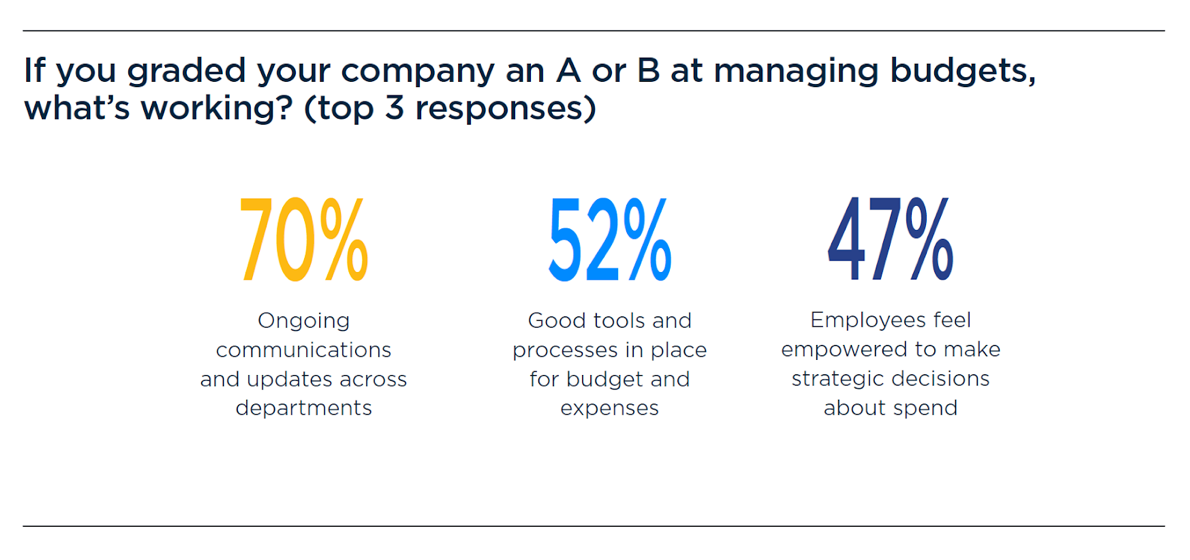The Blueprint for Effective Budgeting

According to our budget survey, it’s two key factors working together that drives success.
Previous article in this series: Who’s Responsible for Keeping Your Budget on Track?
In our State of Corporate Budget 2018 survey, we asked the business leaders who gave themselves high marks for managing their budgets what’s working well.

The “A” List
For companies that gave themselves an A or B for budget effectiveness, regular communication topped the list of what’s working well.
When you compare the companies who gave themselves an A to those who gave themselves a B, however, an interesting distinction emerges. “A” companies were more likely to implement ongoing communications (86%) along with good tools and processes (70%). “B” companies were more likely to attribute success to one or the other—either communications (67%) or tools and processes (47%).
In addition, “A” companies were less likely to credit the finance department for keeping them on track compared to “B” ones (33% vs. 45%). The companies that are most successful with their budgets favor a greater sense of transparency and collaboration over reliance on one department.
Center Team Take
Success requires a combination of ongoing communication with good tools and processes. This offers better visibility into spend and decreases the time spent managing a manual process. While the budget can feel like a tedious process that impedes mission-critical work, it should be a strategic part of planning and operations. It’s the way to allocate resources to the highest-priority projects and the method to ensure those resources are used efficiently. | Heather Singh, CMO
TO THE POINT:
Our survey revealed a wide range of attitudes and processes, but ongoing communication across departments, in combination with good tools, is the winning formula.
